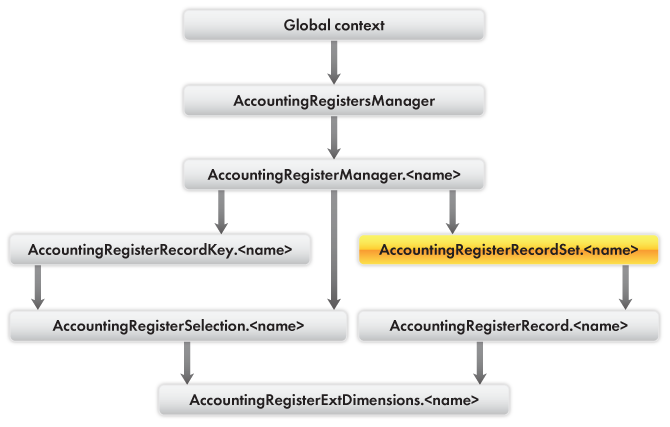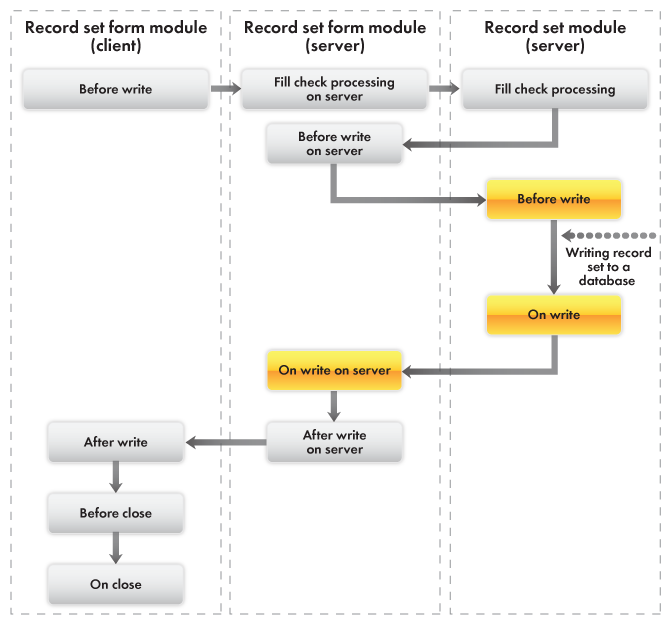Accounting registers
1C:Enterprise script objects used for operations with accounting registers
The following chart shows the interaction between 1C:Enterprise script objects used for operations with accounting registers (fig. 29.21).

Fig. 29.21. 1C:Enterprise objects used for operations with accounting registers
Note. The yellow box indicates the data manipulation object.
Learn more! For details on major types of 1C:Enterprise script objects, see section 1C:Enterprise script objects used for operations with applied data.
AccountingRegisterRecord.<name> provides access to accounting register records. This object is not created directly. Instead, it is provided by other objects related to accounting registers. For example, this object represents register records in a record set.
AccountingRegisterExtDimensions.<name> is a collection of extra dimension values of an accounting register record. Setting and getting values of a specific extra dimension are performed using the [] operator that accepts extra dimension type as a parameter, or using a predefined extra dimension name.
AccountingRegisterRecordKey.<name> is a set of values that uniquely identify a register record. This object is used for referencing a specific record. For example, this object represents a value of the CurrentRow property of the tabular section that stores a list of register records.
Properties and methods used for operations with accounting registers are similar to properties and methods used for operations with accumulation registers. See section 1C:Enterprise script objects used for operations with accumulation registers.
Event sequence for writing accounting register record sets from record set forms

Fig. 29.22. Event sequence for writing an accounting register record set from a record set form
Note. Yellow boxes indicate events executed in the writing transaction.
